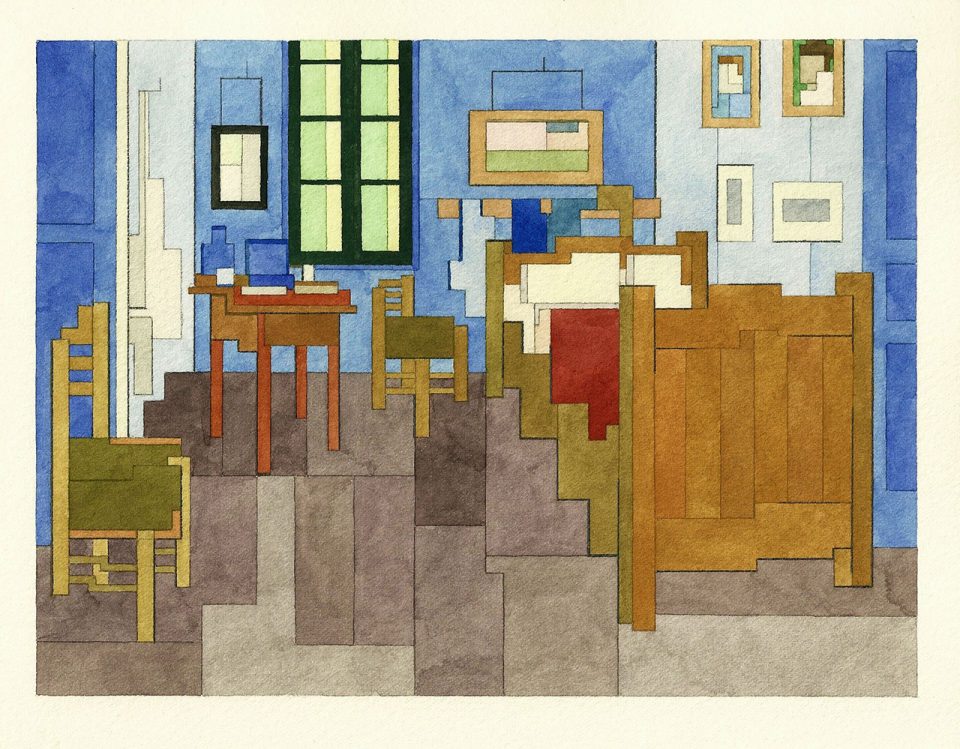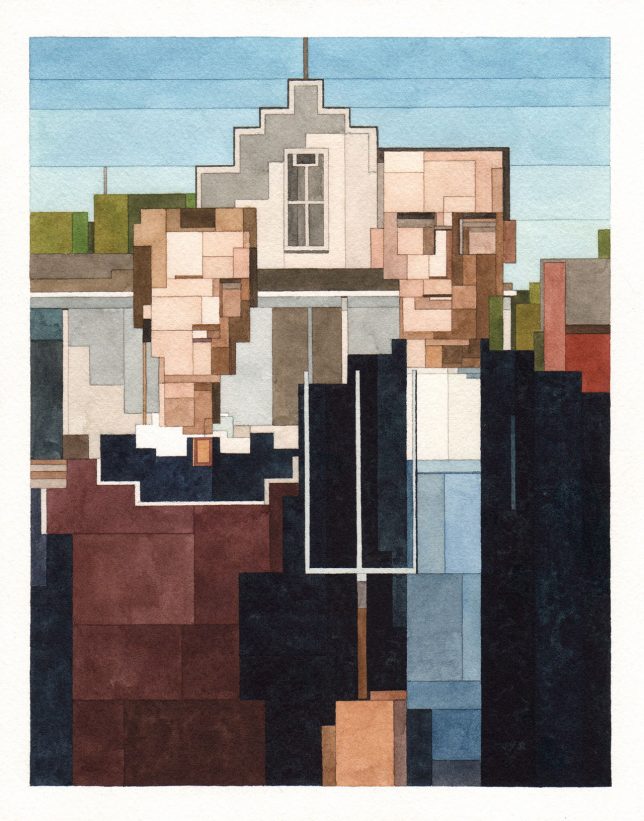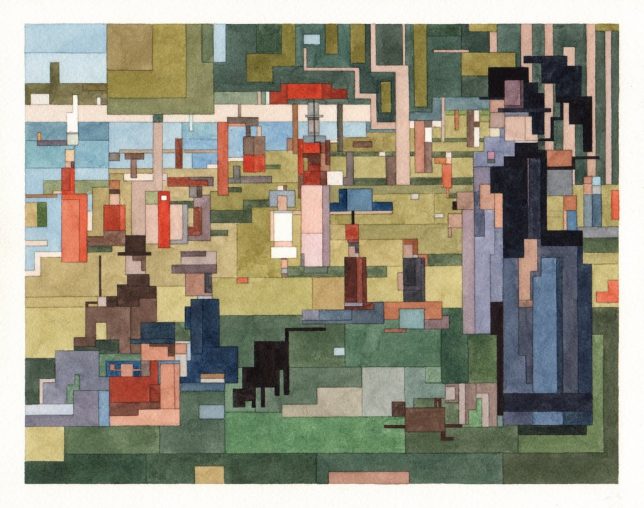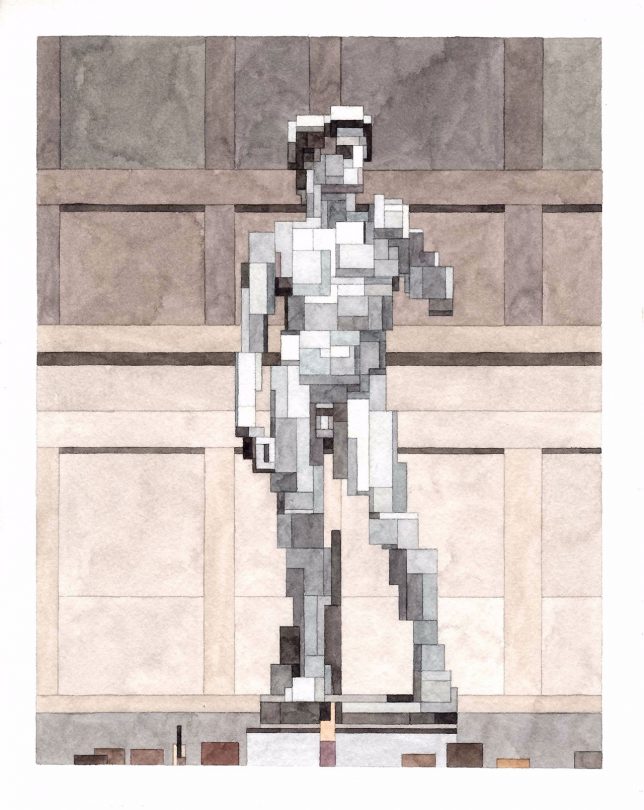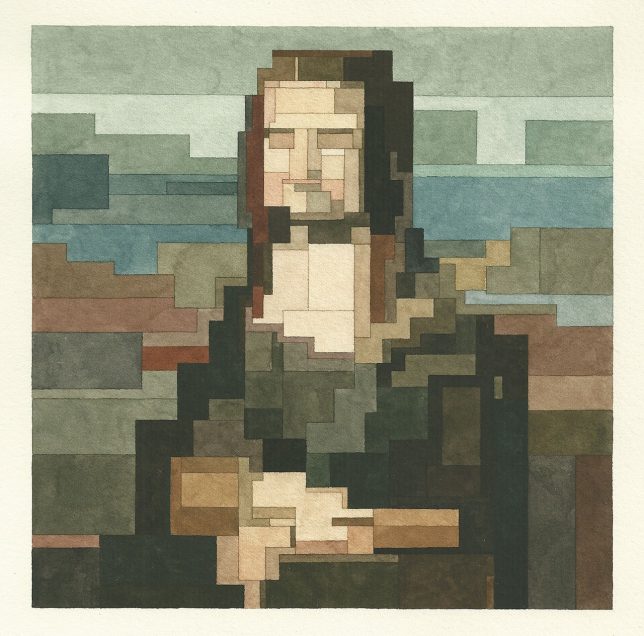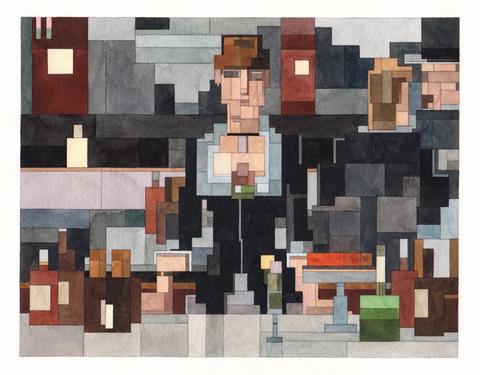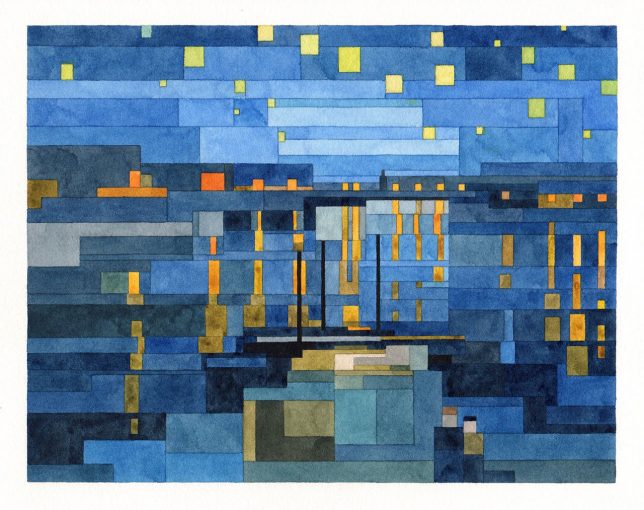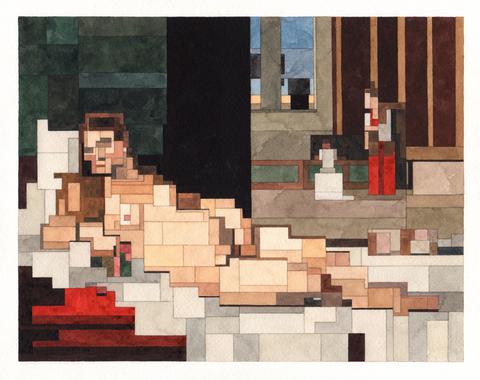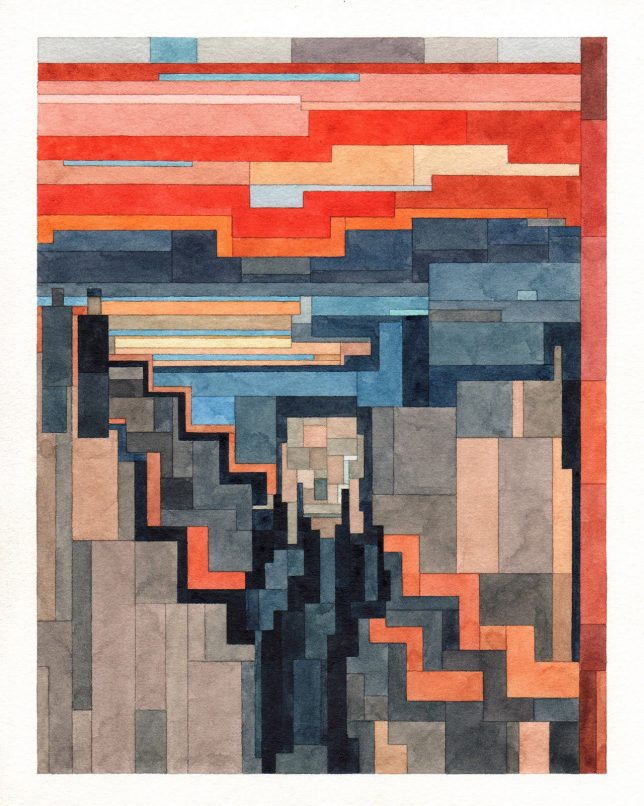Some centuries-old works of art are so imprinted upon the collective consciousness, our brains recognize them even when they’re blurred, disguised, abstracted or otherwise remixed. You could break them down into their simplest elements and somehow, you’d still be able to identify them as the Mona Lisa, Michelangelo’s statue of David, American Gothic or Nighthawks at the Diner. After previously breaking down images of iconic celebrities and pop culture figures, artist Adam Lister has turned his attention to ‘Art History 101.’
He works in watercolor on cold press paper, and each piece is smaller than it looks, typically measuring no more than 8 by 10 inches. These representations of highly recognizable subjects aren’t simply pixelated in the way a computer would render the image; their shapes and most important visual elements are interpreted in a more thoughtful and intentional way to create a result that’s not simply a copy, but a work of art in its own right.
“My process deals with taking the memory of an image, and highlighting its complexity and simplicity at the same time,” says Lister in his artist statement. “These paintings are influenced by geometric thinking and a desire to capture the briefness of a mental picture.”
The paint takes to the paper in a way that almost suggests a texture of velvet or felt, the lines and edges crisp, the colors no less effective for having been simplified and separated into rectilinear shapes. Can you name all of the works pictured here without double-checking your guesses at Lister’s website?

